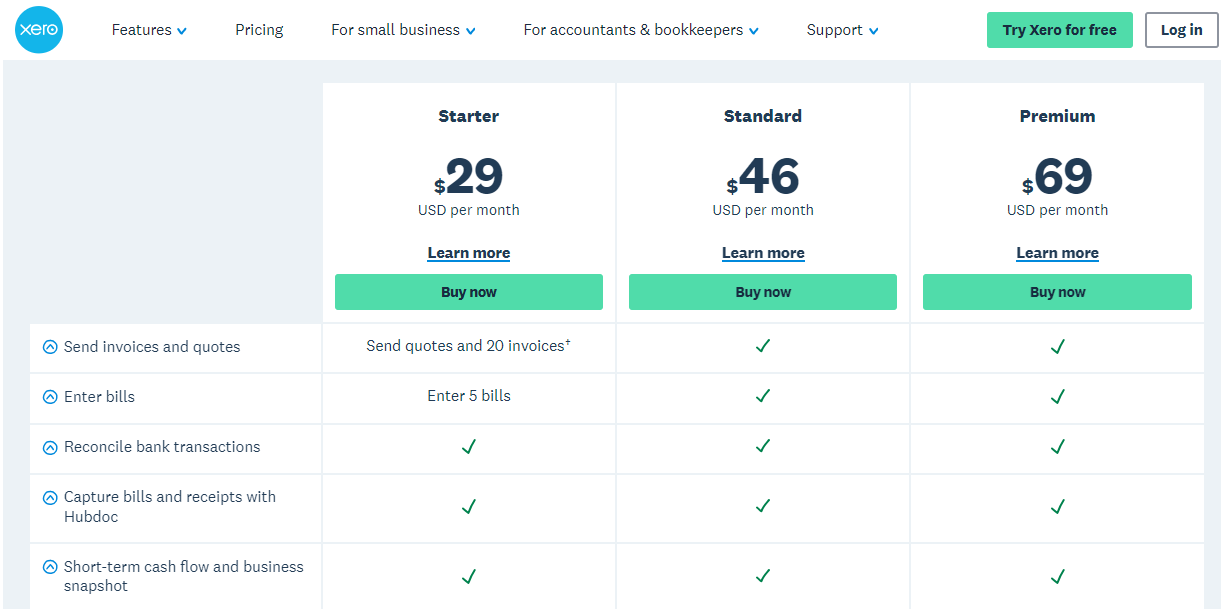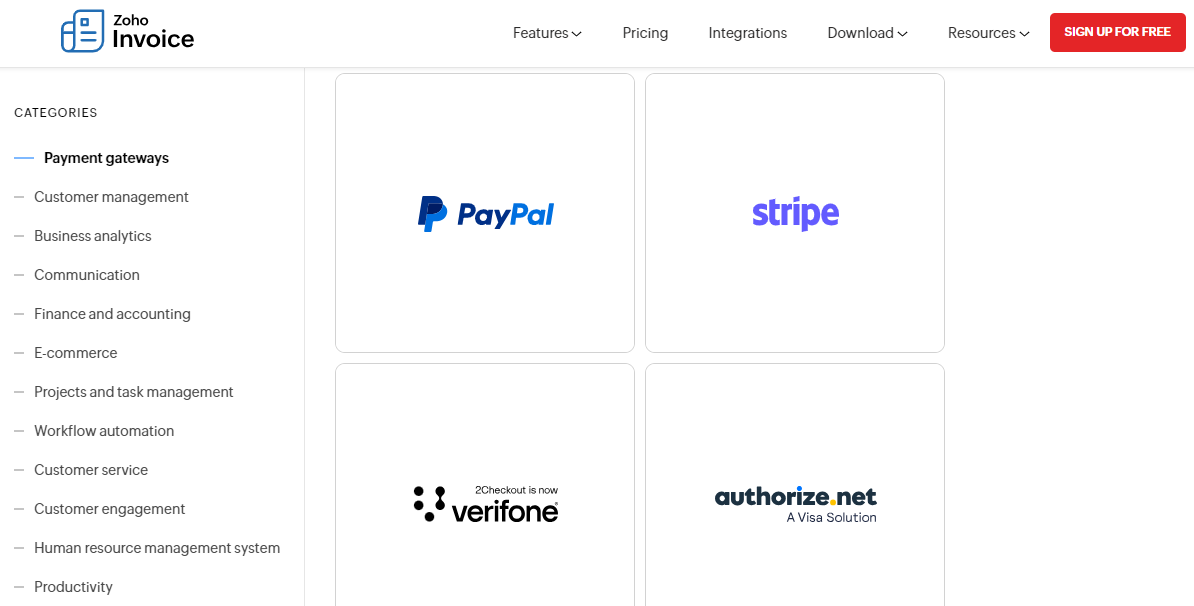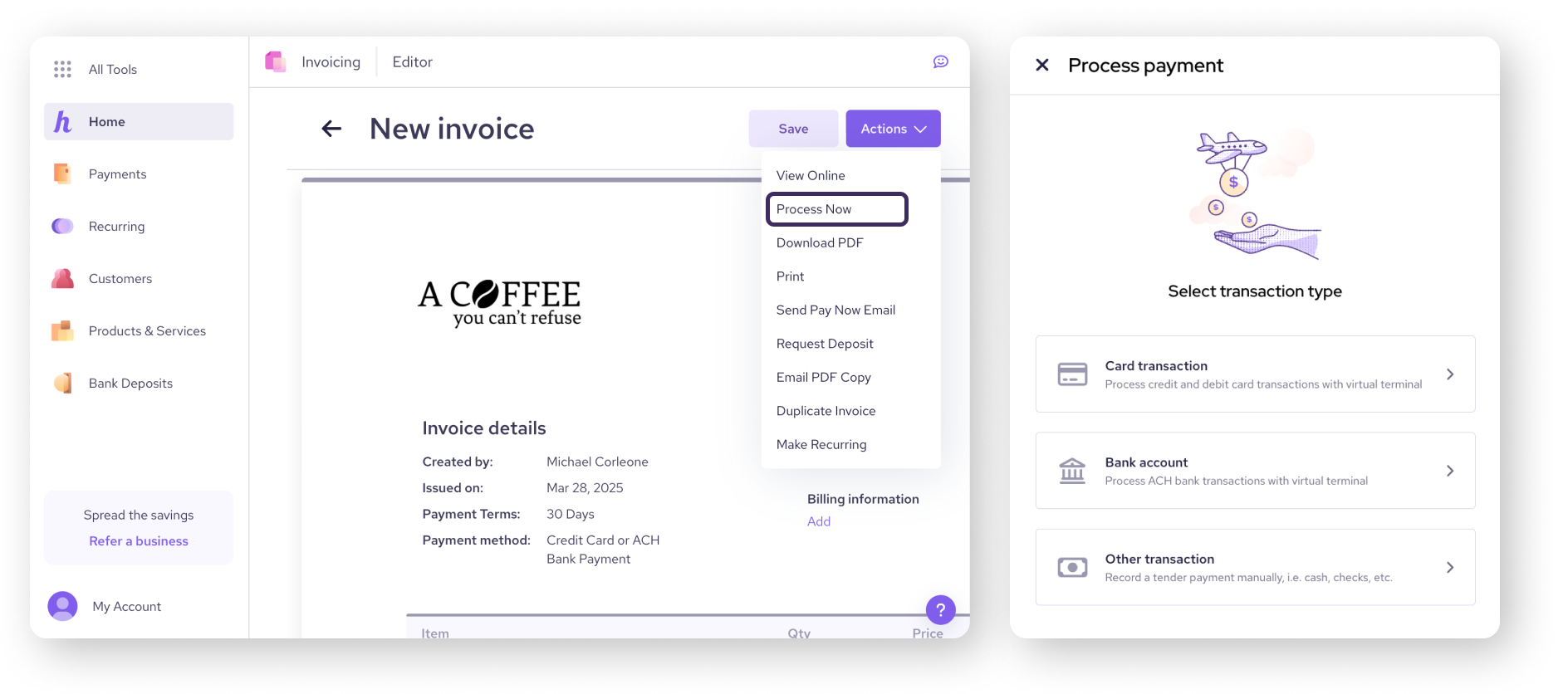Choosing the right invoicing software can save your team time, improve accuracy, and ensure compliance. A good invoicing solution helps you automate tasks, manage cash flow, and handle payment processing efficiently. It supports professional invoices, reduces late payments, and improves your overall financial management. But pick the wrong one, and you might face inefficiencies, errors, and compliance issues.
This guide is for small business owners, finance managers, freelancers, and anyone responsible for handling invoices. I’ll help you navigate the software options and find a tool that fits your business needs.
9 Things to Look for When Choosing Invoicing Software
To pick the best invoicing software, focus on key features that will impact your team’s workflow and efficiency. Consider these elements to ensure you make a smart choice:
1. Plan Flexibility

Plan flexibility means you can upgrade or downgrade your subscription as your business needs change. This matters because your invoicing process might grow or shrink, and you don’t want to be stuck with a cloud-based service that doesn’t fit.
Look for billing software that allows easy changes to your plan without penalties. Ask the software providers about their policy on plan changes and try to forecast your future needs based on scalability and pricing models.
2. Data Access and Reporting

Data access and reporting let you view and analyze your financial data in various ways. This feature helps you track performance, spot overdue invoices, and generate financial reports.
Choose software that provides customizable reports and easy data export options to tools like Excel. During a demo, explore the reporting features and see if they meet your bookkeeping needs.
3. Integration with Your Tech Stack

Integration ensures the software works smoothly with your existing tools, like accounting software (QuickBooks, ERP systems) or CRM. This saves time, reduces manual invoicing, and helps streamline your invoicing tool into your daily operations.
Check if the invoicing software offers integrations with your current systems. Ask for a list of compatible tools and test the workflow during a trial.
4. Onboarding and Support
Onboarding and support determine how quickly your team can start using the software and how issues are resolved. Good customer support means less downtime and frustration.
Look for vendors offering comprehensive onboarding, training resources like tutorials, and responsive support across channels. Test their support by reaching out with questions during your trial period.
5. Role-Based Permissions
Role-based permissions allow you to control who can access and edit what within the invoicing software. This is important for maintaining data security and accountability.
Ensure the tool lets you set permissions based on user roles and offers an intuitive dashboard for managing access. During a demo, explore how easy it is to assign and change permissions.
6. Industry-Specific Compliance
Industry-specific compliance ensures the software meets the legal and regulatory standards of your industry. This is crucial for avoiding fines and penalties.
Verify that the software complies with relevant regulations, such as tax laws or payment gateways’ standards. Ask for documentation or case studies from similar providers or industries, especially those involving ACH, credit card, or PayPal transactions.
7. Customization Options
Customization options let you tailor the billing process to fit your specific needs, like branding invoices or setting unique payment terms. This flexibility improves your team’s efficiency and helps generate custom invoices or use customizable invoice templates.
Look for software that allows customization without needing technical expertise. During a trial, experiment with the invoice creation features to see how they work.
8. Automation Features

Automation features help you streamline repetitive tasks, like send invoices, follow-ups, or recurring invoices. This reduces time-consuming work and lowers the chance of data entry errors.
Choose software that supports automated invoicing and smart payment reminders. Test these features during a demo to ensure they align with your financial management process.
9. Mobile or Multi-Location Support
Mobile or multi-location support allows your team to access the software from anywhere, which is vital for remote work or multi-office setups.
Check if the software has a mobile app or cloud-based web access that supports real-time updates. Try accessing the software from different locations or devices to test flexibility for teams and startups.
How to Choose Invoicing Software: A 5-Step Framework
To find the right invoicing software, focus on what your team needs most. Consider key features, pricing, and how the software fits into your current workflow.
This approach will help you make a choice that enhances your invoicing process and supports your broader financial management goals. Here’s a simple step-by-step guide to follow.
Step 1: Identify Your Needs
Start by understanding your team’s specific requirements for invoicing software. Gather input from stakeholders and align with your business needs:
Gather Stakeholder Input
Talk to key stakeholders like HR, finance, and IT to understand their needs. Ask them about current challenges and desired functionality—from invoice templates and online invoicing to payment gateways and integration with tools like QuickBooks, CRM, or ERP.
Use surveys or meetings to collect this information. Involve employees who handle invoice creation, data entry, or manual invoicing daily for practical insights.
List and Prioritize Pain Points
Identify what frustrates your team with the current system. Common issues might include slow processing, errors, or lack of integration with existing accounting software.
Prioritize these pain points to focus on software solutions that will have the most impact. Create a list to keep track of these concerns—especially if you’re dealing with late payments, overdue invoices, or inefficient billing processes.
Align with Policies and Goals
Make sure your requirements align with internal policies and goals. Consider vendor preferences, data security protocols, and any regulatory requirements related to payment methods or financial data.
This ensures the software fits seamlessly into your existing framework. Work with leadership to confirm these alignments.
Differentiate Must-Have Features
Separate essential features from those that are just nice to have. Must-haves might include automated invoicing, recurring billing, or custom invoices. Nice-to-haves could be a mobile app, support for multiple currencies, or customizable invoice templates. This helps focus your search on invoicing tools that meet core needs and support scalability.
Ask These Questions:
- What complaints or blockers come up most often?
- What needs aren't being met today?
- What features would solve your top 3 pain points?
- What ROI are you expecting from this investment?
- How does the software align with security and compliance requirements?
Step 2: Research Invoicing Software Vendors
Research potential software providers to find the best invoicing software for your needs. Use these strategies to compare software options and document your findings:
Conduct Vendor Scans
Start with high-level scans using review sites, rankings, and case studies. Look for feedback on user satisfaction, reliability, and customer support. This will give you a broad view of the cloud-based vendor landscape.
Pay attention to common praises or complaints—especially around online payments, paypal, ACH, or limited payment options.
Compare Based on Needs
Evaluate tools based on your business size, required integrations, or whether you need to outsource vs. create in-house models.
Small businesses or freelancers might need a more user-friendly, all-in-one solution, while larger companies may prefer enterprise-grade tools with robust dashboard and financial reports. Match the software solutions to your specific needs.
Identify Key Differentiators
Look for key features like implementation support, customization options, or ease of use across devices. For example, some providers offer extensive tutorials, while others specialize in invoice generation or flexible payment terms. Determine which factors are most important for your team.
Document Findings
Keep track of your research by documenting your findings. Create a spreadsheet to compare features, pricing models, and support. This will help you make an informed decision when you’re ready to choose.
Ask These Questions:
- What does each tool do best?
- Does it fit your team size, budget, and stack?
- What support and documentation are available?
- How does the vendor handle implementation and training?
- Are there any hidden fees?
Top Invoicing Software to Consider
Here's my list of the top 10 invoicing software options available, to help you get started in your search:
Step 3: Make an Invoicing Software Shortlist and Reach Out
Narrow your choices to a few providers and start engaging with them directly:
Shortlist Vendors
Select 2–4 vendors based on your earlier research. Focus on those that align best with your needs and budget, including options that offer flexible payment methods, expense tracking, or automated features like payment reminders and send invoices. This shortlist helps you concentrate your efforts on the most promising options.
Send an RFI or RFP
Consider sending a Request for Information (RFI) or invoicing software RFP to gather more detailed information. This formal request helps you understand each vendor’s capabilities, payment processing model, and pricing. Use this step when you need to compare specific features in depth.
Book Demos and Ask Questions
Schedule demos with your shortlisted vendors and prepare focused questions. Ask about user-friendly design, integration capabilities with accounting software, and support for recurring invoices or multi-currency billing. This interaction helps you see the software in action and assess how it fits your needs.
Use Consistent Evaluation Criteria
Apply the same evaluation criteria across all vendors. This ensures a fair comparison and helps you make an objective decision. Create a checklist of must-have features, payment options, and customer support levels to guide your assessment.
Ask These Questions:
- Can you walk me through a real customer story like ours?
- What support or onboarding resources do you offer?
- What features require an upgrade?
- How does your software handle data security?
- Can you provide references from similar businesses?
Step 4: Build the Business Case
Turn your vendor research into a persuasive business case that your leadership team will support:
Summarize Pain Points and Outcomes
Clearly outline the pain points your team faces and the expected outcomes from the new software. Highlight issues like time-consuming processes or frequent errors. Explain how the software will address these challenges and improve efficiency. Use specific examples to make your case compelling.
Present Cost Estimates and Timelines
Gather basic cost estimates and implementation timelines from your vendors. Present this information clearly to show the financial impact and time commitment. Use straightforward comparisons to illustrate the benefits versus costs. Include details like invoicing software pricing and expected go-live dates.
Articulate ROI and Risks
Explain the potential ROI, efficiency gains, and risks of not adopting the software. Discuss how the software could save money or improve operations. Highlight the financial or operational downsides of sticking with the current system. Use data or case studies to support your points.
Ask These Questions:
- What business problem will this solve?
- What are the risks of doing nothing?
- What are the financial and operational upsides?
- How will this software improve team productivity?
- What metrics will we use to measure success?
Step 5: Implement Your Invoicing Software and Onboard Your Users
Successfully launch your new invoicing software by planning a smooth onboarding process:
Communicate the Rollout Plan
Clearly share the rollout plan with all users. Include timelines, key dates, and what to expect. Use emails, meetings, or internal newsletters to ensure everyone is informed. This transparency helps set expectations and reduces confusion.
Assign Internal Owners
Designate internal owners and points of contact for the software. These individuals will manage the implementation process and address user questions. Make sure they’re well-informed and ready to support their colleagues. This helps maintain accountability and smooth communication.
Ensure Training and Adoption
Guarantee that your team completes training and adopts the tool consistently. Use vendor-provided resources like tutorials or webinars. Schedule training sessions and track attendance to ensure everyone’s on board. Regularly check in with users to address any issues.
Create Feedback Loops
Set up feedback loops during the rollout. Encourage users to share their experiences and suggestions. Use surveys or meetings to gather input and adjust the process as needed. Involve vendor resources for additional support and insights.
Ask These Questions:
- What’s the change management plan?
- Who’s responsible for roll-out?
- How will you track early success?
- What training resources are available?
- How will feedback be collected and acted upon?
What’s Next:
If you're in the process of researching invoicing software, connect with a SoftwareSelect advisor for free recommendations.
You fill out a form and have a quick chat where they get into the specifics of your needs. Then you'll get a shortlist of software to review. They'll even support you through the entire buying process, including price negotiations.


